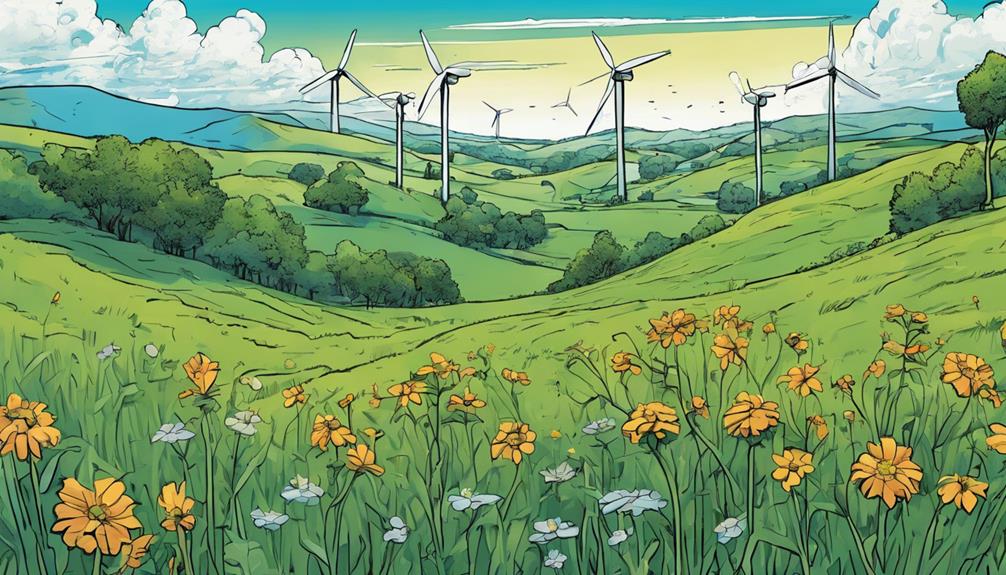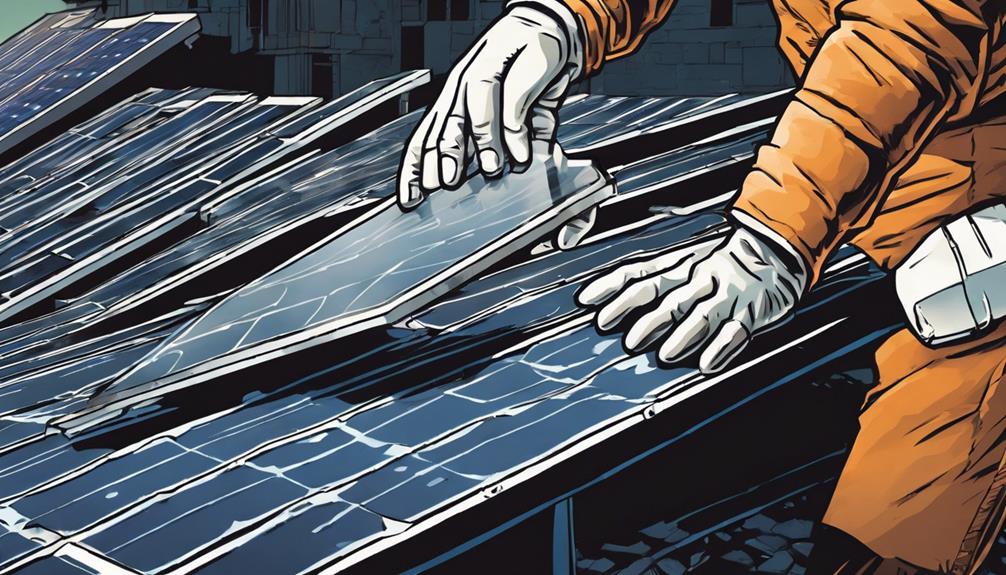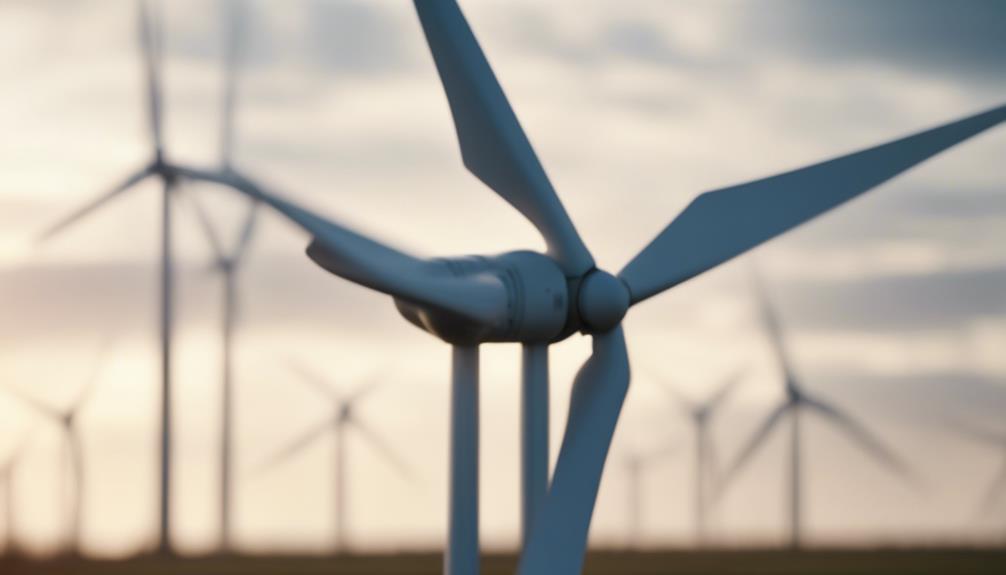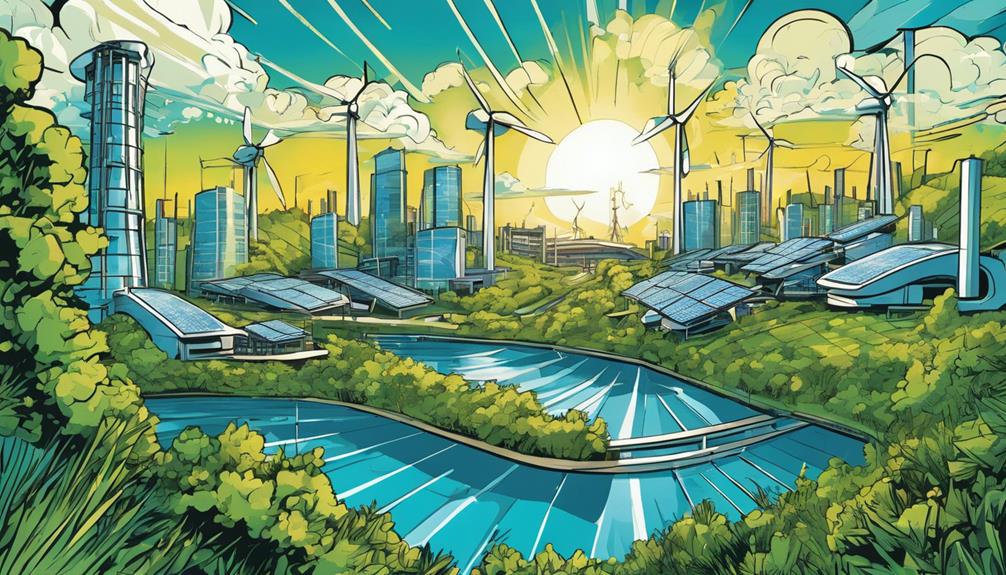Wind turbines have revolutionized the way we generate electricity, converting up to 50% of wind kinetic energy into power and reducing our reliance on fossil fuels. Modern turbines capture low wind speeds effectively, and their efficient conversion process makes them an essential component of a sustainable energy future. With cost-effective maintenance and reduced greenhouse gas emissions, wind energy is a reliable and safe power source. By understanding the advantages of wind turbines, from blade configuration to safety installation tips, we can harness wind power efficiently and brighten our world – and there's more to explore on this innovative topic.
Key Takeaways
- Wind turbines convert up to 50% of wind kinetic energy into electricity, reducing reliance on fossil fuels and greenhouse gas emissions.
- Modern turbines capture low wind speeds effectively, generating electricity efficiently and promoting energy independence.
- Wind energy is cost-effective with low maintenance costs, making it a viable alternative to traditional power sources.
- Proper installation and maintenance of wind turbines ensure safe operation, mitigating risks and environmental concerns.
- Wind turbines are a crucial component of the renewable energy future, reducing carbon footprint and combating global warming effectively.
Harnessing Wind Power Efficiently

By leveraging cutting-edge technology, wind turbines can convert up to 50% of the kinetic energy in wind into electricity, making them an increasingly efficient source of renewable power.
Modern turbines capture low wind speeds effectively, ensuring a consistent energy output. The blades, attached to a central hub, rotate with the wind speed, generating electricity that's either stored in batteries or sent to the grid.
This efficient conversion process reduces reliance on fossil fuels, decreasing carbon emissions and combating global warming. With proper installation and maintenance, wind turbines offer a reliable and cost-effective solution for powering light bulbs and beyond.
As technology continues to advance, wind energy is becoming an increasingly essential component of our renewable energy future.
Advantages of Renewable Energy

Wind energy offers numerous advantages, making it an attractive alternative to traditional fossil fuel-based power sources. One of the most significant benefits is its cost-effectiveness, with low maintenance costs and no fuel costs. Additionally, wind energy generates electricity without burning fossil fuels, reducing greenhouse gas emissions and dependence on finite resources.
Reduced carbon footprint and contribution to combatting global warming
Local communities can control their energy needs with wind turbines
Reliable and safe source of power when properly installed and maintained
Reduces dependence on fossil fuels, promoting energy independence
Safety First Installation Tips
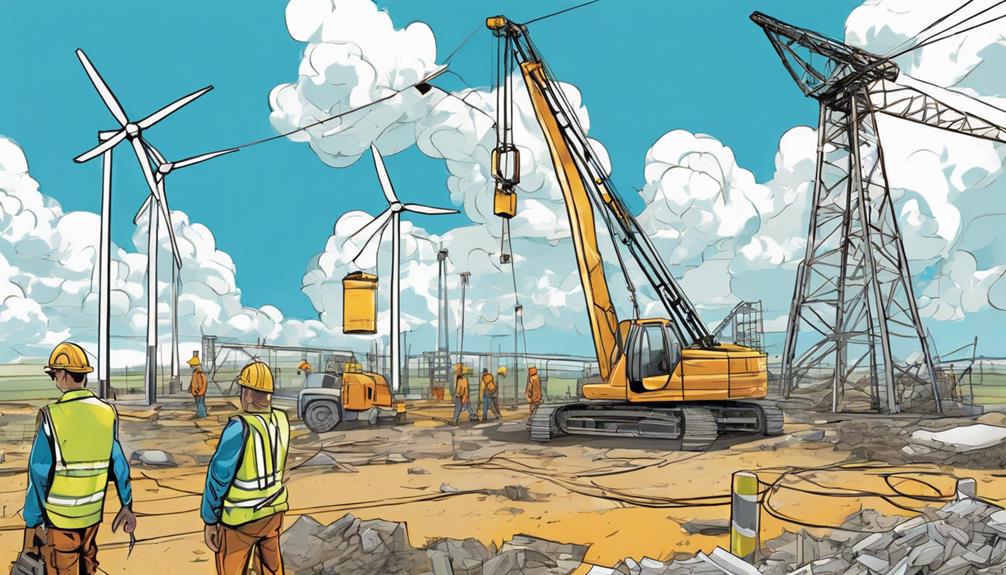
Before setting up a wind turbine, a comprehensive risk assessment is vital to identify and mitigate potential hazards, guaranteeing a safe and smooth operation. This involves assessing noise levels, fire hazards, and electrical shock risks.
Proper setup and maintenance are critical to preventing accidents and ensuring the turbine operates within safe parameters. It's also important to take into account environmental concerns, such as bird strikes and blade debris.
Blade Configuration Essentials

When it comes to optimizing wind turbine performance, the blade configuration plays a critical role, as it directly impacts energy production, noise levels, and overall system efficiency. The right blade configuration can make all the difference in harnessing wind power efficiently.
- Two-blade turbines are ideal for low and variable wind speeds, offering a cost-effective solution.
- Three-blade turbines are popular for their greater efficiency and noise reduction capabilities.
- Multi-blade turbines provide increased production capacity and stability in strong winds.
- The choice of blade configuration ultimately depends on factors like wind conditions, performance requirements, and budget constraints.
Reducing Carbon Footprint Effectively
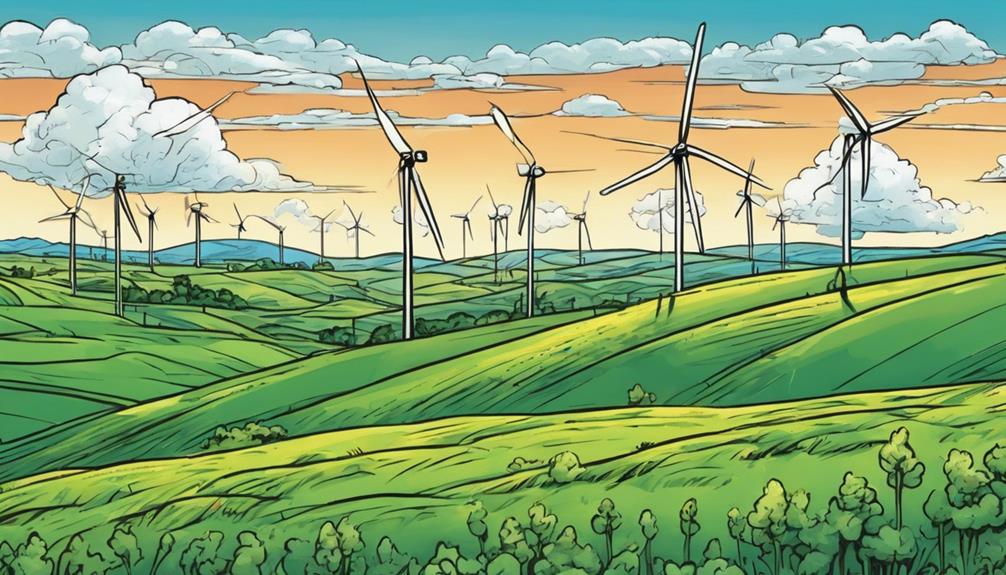
Sure, please go ahead and share the content that needs adjustment.
Frequently Asked Questions
Can Wind Turbines Be Used in Urban Areas?
Yes, wind turbines can be used in urban areas, although their efficiency may be affected by surrounding buildings and structures, which can disrupt wind flow and reduce energy production.
How Do Wind Turbines Handle Extreme Weather Conditions?
Wind turbines are designed to withstand extreme weather conditions, handling high winds, lightning strikes, and icing. They're built with durable materials, securing blades and towers to guarantee continuous energy production amidst harsh weather.
Can I Install a Wind Turbine on My Rooftop?
She can install a wind turbine on her rooftop, but it's essential to take into account factors like wind speed, turbine size, and structural integrity to guarantee a safe and efficient energy-generating system.
Do Wind Turbines Affect Local Wildlife Habitats?
Studies show that 85% of wind turbines are installed within 10 miles of wildlife habitats. While turbines can impact local ecosystems, proper placement and monitoring can minimize effects, ensuring a harmonious coexistence between wind energy and wildlife.
Can Wind Turbines Be Used to Charge Electric Vehicles?
They can use wind turbines to charge electric vehicles, storing excess energy in batteries or feeding it back into the grid, making wind power a viable, eco-friendly option for transportation.
Are Rooftop Wind Turbines as Effective as Traditional Wind Turbines in Brightening Your World?
When it comes to green energy rooftop turbines unleashed, there is some debate over their effectiveness compared to traditional wind turbines. While rooftop turbines are more accessible and can take advantage of urban wind patterns, traditional turbines generally have a higher energy output due to their larger size and higher elevation.
Conclusion
As the blades of change continue to turn, wind turbines stand tall as a shining example of innovation, efficiently harnessing wind power to brighten our world.
By embracing renewable energy, we reduce our carbon footprint, promote a cleaner environment, and secure a sustainable future.
With safety and efficiency in mind, wind turbines illuminate the path to a brighter tomorrow, one rotation at a time.
